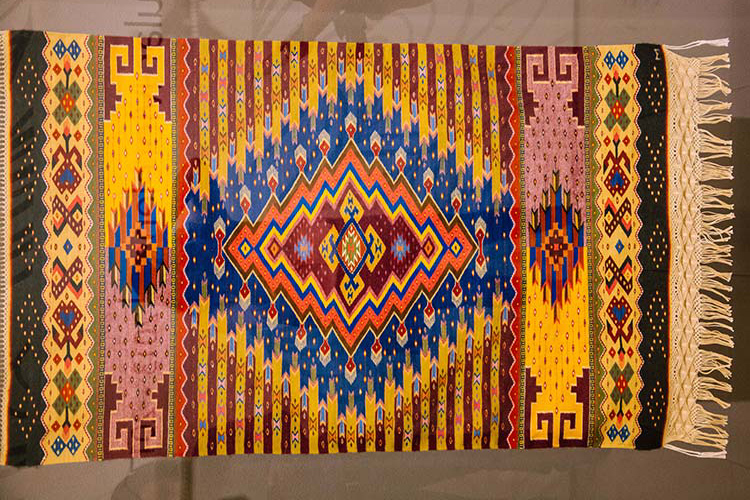
by Barbara Erickson
The Zapotecs of the Oaxacan central valley are known as the “The Cloud People”. It only takes one visit to their ancient heartland to appreciate the name, the high cumulous clouds brushing the tops of the surrounding mountains cast their shadows all across the valley.
The ancient Zapotec state flourished between 300 BC and 700 AD and their monumental sites, Monte Albán, the capital, and Mitla known as Lyobaa in Zapoteco, a ceremonial “place of rest” have inspired Jacobo Mendoza’s prize winning weavings since he first began on the loom, at five years of age.
The mosaics of Mitla were made with pieces of cut-stone that were inlaid onto panels known as fretwork or step fret designs. These patterns can be found in Old World sites built by the Greeks, Romans and Assyrians, perhaps they lend themselves to intricate stone work.
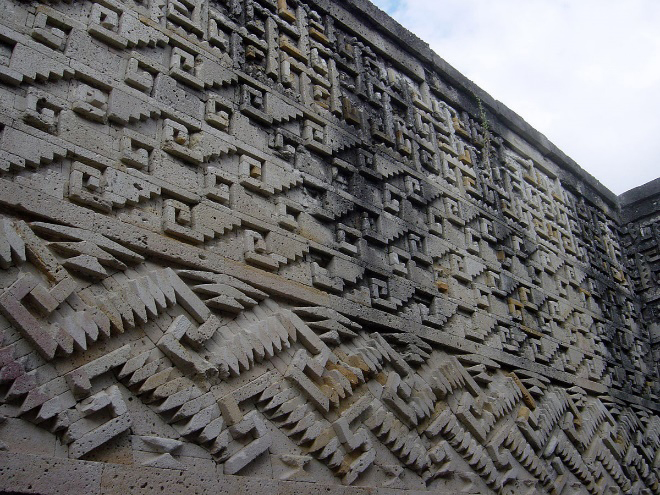
According to historian Mark Cartwright it is possible that weaving patterns came first, the designs are found in the pottery of the era as well. It has been suggested by some that within the complexity of these mosaics is a coded language. This hypothesis, however, has yet to be proven. You can imagine the brilliant colors by looking at Jacobo’s weavings that incorporate some these same designs. He likes to say that his family has been weaving since long before the conquest, so perhaps Cartwright is on to something.
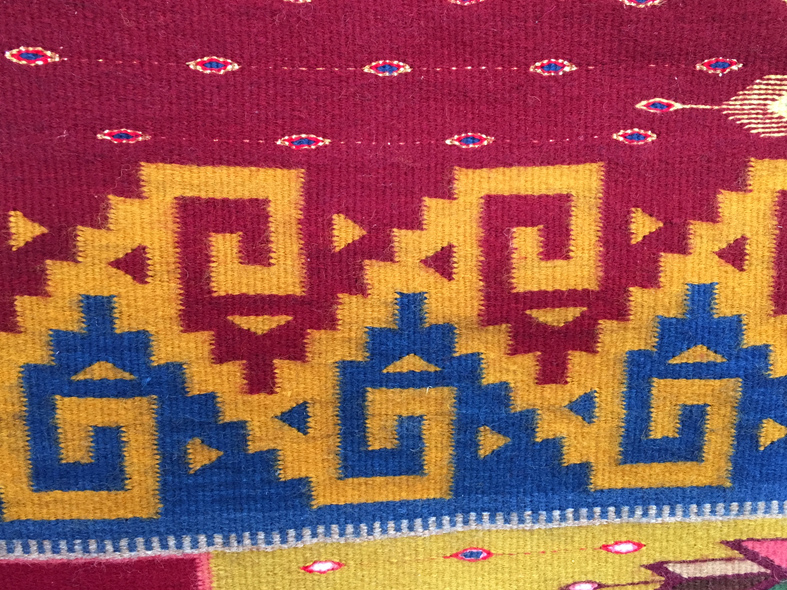
This pattern mimics the mosaic grecas” so spectacularly preserved at the ancient Zapotec religious center of Mitla. According to the Zapotec worldview the geometric spiral represents the life cycle. Each step represents a stage of life, beginning at birth, moving on through youth, maturity and then decay, followed by the other world
Jacobo also uses other traditional Zapotec patterns in his work. I have often questioned him about his sources of inspiration and if he has a pattern for each weaving. No, he weaves from ideas he sees in his mind, inspired by patterns he grew up with and nature herself.
One of his favorites, and one that he has been rewarded for with numerous prizes is the diamonte. The four points of the diamond represent the four elements of earth, air, water and fire. The symmetry of the diamond also represents a pyramid mirrored horizontally; signifying that the reality we see is a mirror, which reflects what lies within us.
Some prize winning diamontes:
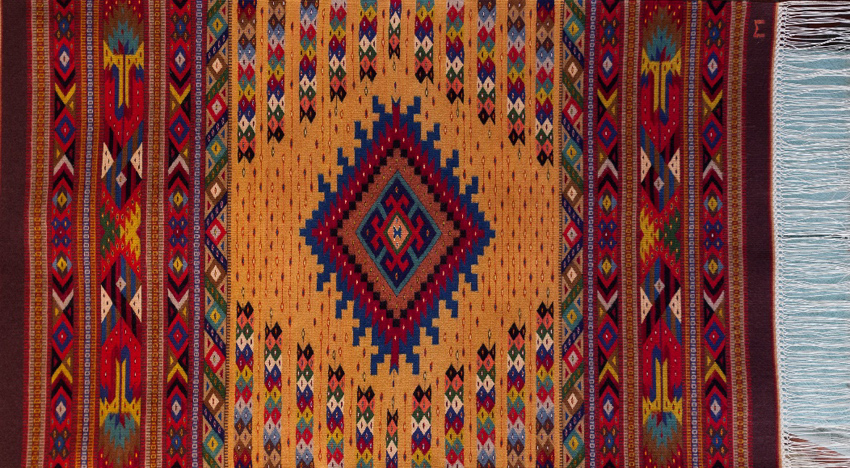
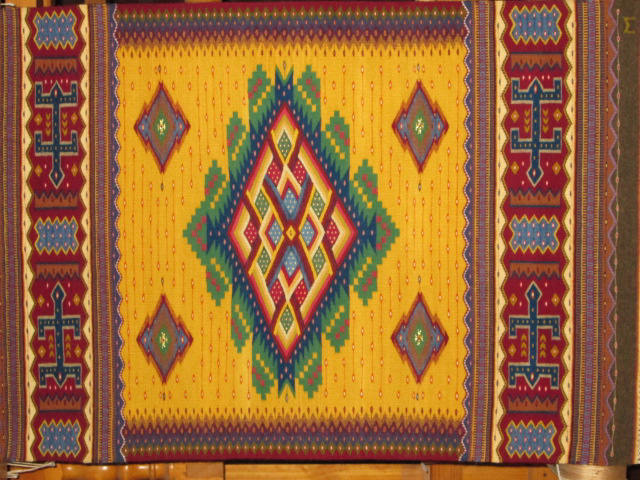
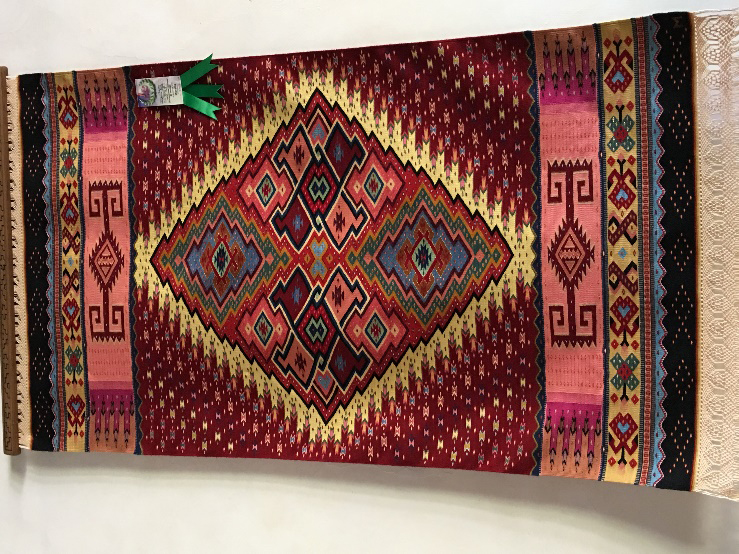
When you live surrounded by mountains you get lightening as well as clouds. The zigzag pattern represents lighting, which is connected to the ancient Zapotec god of lightning and rain, Cocijo

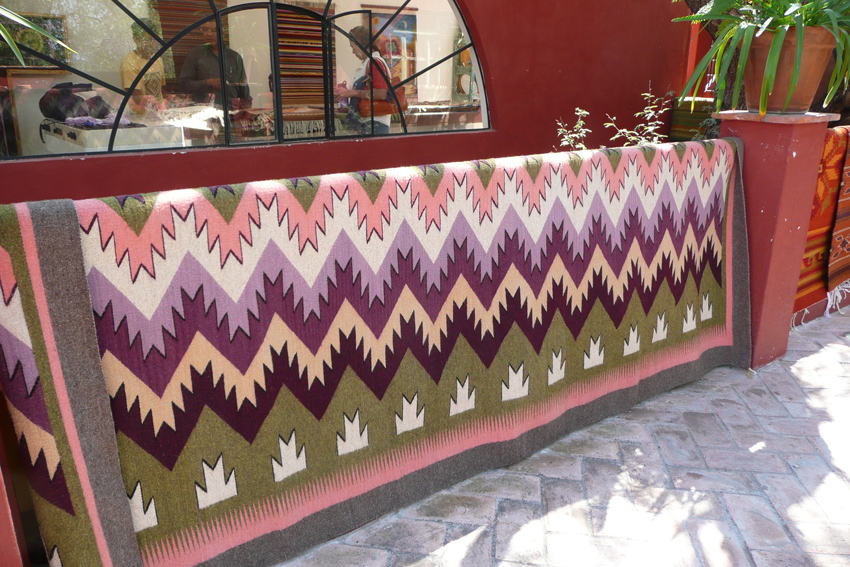
Agaves are endemic to the Oaxacan valley and provided the Zapotecs with fibers for their weavings long before the Spaniards brought their sheep. They also provide us with that magical beverage, mezcal as well as pulque. The leaves and flowers can be eaten and the plant is also known for its medicinal uses. The shape of the large spiky plant is stylized in its woven form, with a central point representing the agave flower (looks like lightening is part of this pattern too).

Arrows are another frequent motif used on the borders of many of Jacobo’s weavings. His are particularly fine, it is very hard to create the arrow shape with an outline of a different color. Arrows are important, they are used for hunting and even warfare. Symbolic now, they are part of the Zapotec tradition.
The Ojo de Dios is symbolic of the power of seeing and understanding the unseen. Jacobo has his own personal definition of the God’s eye. This one looks like a God’s eye diamonte to me. You can ask him to explain.
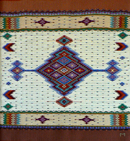
Jacobo also weaves dream visions, very difficult free form patterns that have their roots in Zapotec mythology. And he takes inspiration from the codices, the Mesoamerican ancient texts. Here is an example:
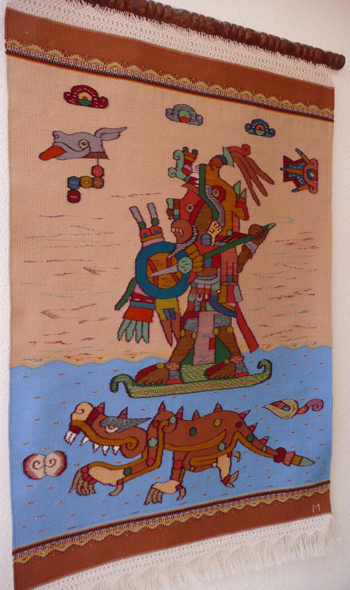
Each of Jacobo’s pieces are one of a kind works of art. The yarns he uses can be local Oaxacan wool, fine cashmere, silk, alpaca and all of them are meticulously dyed by hand using only natural dye stuffs. He uses a method of dying know as slow dye, which means that the mordents, or fixatives for the colors are also natural materials, such lime, mango skins, and alum. Just preparing the fibers to be woven is a science by itself and the colors resulting from Jacobo’s careful time intensive work are vivid and rich.
Please join Jacobo Mendoza at Casa de la Cuesta for his exhibit and sale of fine works for wall hangings and great pieces for the floor.
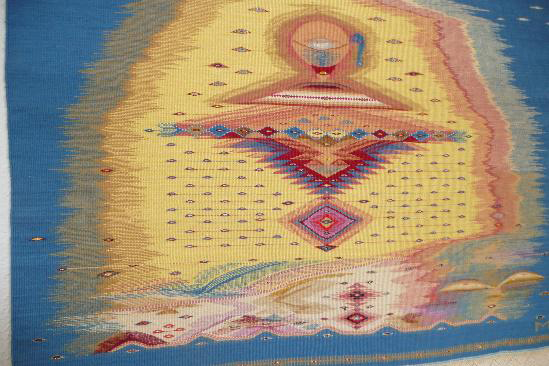
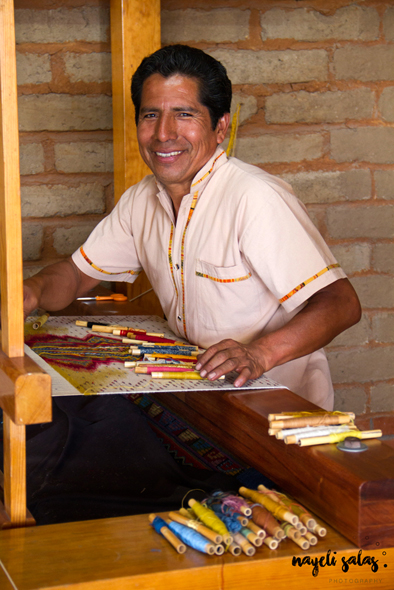 *****
Exhibition and Sale by Oaxacan Master Weaver Jacobo Mendoza
*****
Exhibition and Sale by Oaxacan Master Weaver Jacobo Mendoza
and folkloric artist Blanca Gomez
Traditions of the Day of the Dead Altars ~ Open House Mask Museum and Gallery
Wednesday October 31
1:00 PM Traditions of the Day of the Dead Altar
1:30 – 4:30 PM Open House Mask Museum and Oaxaca Rug Weaver Exhibit & Sale
Thursday November 1
1:00 PM Traditions of the Day of the Dead Altar
1:30 – 4:30 PM Open House Mask Museum and Oaxaca Rug Weaver Exhibit & Sale
Friday November 2
10:00 AM Traditions of the Day of the Dead Altar Talk
10:00 – 2:00 PM Open House Mask Museum and Oaxaca Rug Weaver Exhibit & Sale
There is no admission charge for the talk, museum or exhibits.
La Otra Cara de México Mask Museum and Gallery; Cuesta de San Jose 32, Colonia Azteca
*****
Heidi Levassur of Casa de la Cuesta will be giving her whimsical Day of the Dead Altar talk about local traditions and her personal ones too ~ a local’s take from a long time Mexican resident and serious student of Mexican folk art and culture, before the Mendoza show.
Jacobo will be also available by appointment only on Monday, Tuesday October 30 and November 3 & 4. For more information, call 154-4324
**************
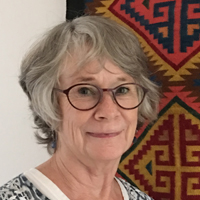
Barbara Erickson lives in San Miguel de Allende. She retired after selling her business in Southern California and happily moved to Mexico with her husband of many years in 2003. She loves Mexican artesanía, traveling in Mexico, studying Spanish and being with friends.
You must register and log in to write a comment.
Please use the "login" link at the top (right) of the page.
|